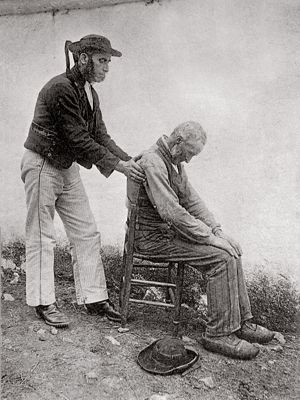Rebouteux: who is this ancestor of the osteopath and physiotherapist?
Tendinitis, sciatica, contracture… Do you think you have tried everything to overcome this pain? How about testing reboutotherapy? The bonesetter is a healer who has the innate talent to heal your nasty ailments.
What is a bonesetter?
Le bonesetter is a healer who claims to cure pain and / or bodily injuries by manipulations and innate gestures. This practitioner does not have any diploma or any specific training. He is most often consulted for bone or joint injuries (fractures, dislocations, tendonitis, etc.). However, many bonesetter also treat rheumatic, neuralgic or muscle pain (osteoarthritis, sciatica, contractures, etc.).
A little history
The bonesetter has been around since the Middle Ages, it is named so because it puts “end to end” the bones and the broken joints. Depending on the region and the time, they were called differently: knotters, knotters, remettoux, rhabilleurs … They were most often men from the countryside exercising the professions of farmers, shepherds, grinders, breeders or even farriers. They claimed to have a gift innate or transmitted by their elders in the healing of injured bones and joints.
Nowadays, we speak of “reboutology” or “reboutotherapy”. These practitioners perform mechanical maneuvers which can take the form of manipulations or massages. Since 1949, the National Group for the Organization of Alternative Medicines (GNOMA) brings together a large number of therapists such as bonesetters, magnetizers, naturopaths, aromatherapists, fire cutters … GNOMA members share the healer’s charter magnetizer which forces them in particular not to formulate any diagnosis.
Why consult a bonesetter?
Reboutology: what therapeutic indications?
The bonesetter claims to repair bone or joint lesions in any part of the body: sprains, dislocations, fractures, tendonitis … But in reality, each bonesetter has his own know-how: some also treat chronic pain, such as rheumatism, osteoarthritis, neuralgia (such as sciatica, cruralgia, cervico-brachial neuralgia, etc.) or even muscle lesions (contractures, tears, etc.).
A complementary therapy to traditional medicine
The reboutotherapy processes have not been scientifically validated and the rebouteurs have not received any training or diploma. Their talent would be natural and innate. Usually, they are recognized through “word of mouth” and their reputation.
Warning, the reboutothérapie is a complementary approach to traditional medicine. Any lesion (or pain) must first be consulted by a doctor who may possibly refer you to a specialist. In case of acute symptoms, it is recommended to go directly to the emergency department.
How does the bonesetter treat?
The methods used by the bonesetter are not subject to any scientific validation. Their objectives are to put back in place: nerves or “wrinkled” muscles, tendons which “jump”, joints dislocated or even fractured bones. Some also claim to relieve chronic pain.
Here are some of their processes as described by GNOMA:
- deep muscle energy massages;
- hookings of tendons, aponeuroses, nerves…;
- sanding of muscle knots;
- friction of ligament or neuralgic points;
- visceral purges;
- descaling and joint clearing ;
- reductions in fresh dislocations or even fractures simpled by manipulations.
The bonesetter is not …
A magnetizer
Contrary to popular belief, the bonesetter is not a magnetizer. Indeed, the latter uses magnetic fluids for the purposes of relief and healing of ailments and diseases. For his part, the bonesetter truly manipulates the lesion or the painful region.
A physiotherapist or an osteopath
The bonesetter should not be confused with the osteopath or physiotherapist either. Indeed, if these two health professionals also use manipulation and massage, they have received specific and recognized training, which is not the case for the bonesetter. The latter would have obtained his skills spontaneously: they often claim that this talent is innate or that it was transmitted to them by their elders.
How to find a bonesetter?
In order to find the binder closest to you, you can consult the list of GNOMA practitioners (refine the search by selecting the practice “bouncing”).
In order to be sure of his area of expertise, you can contact him directly. You can also rely on the results obtained by other patients or on his reputation (for example by consulting reviews on Google).










